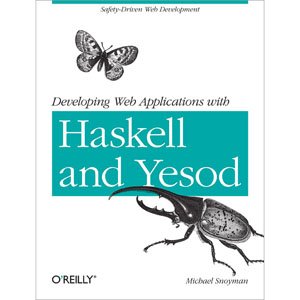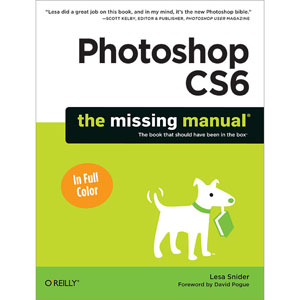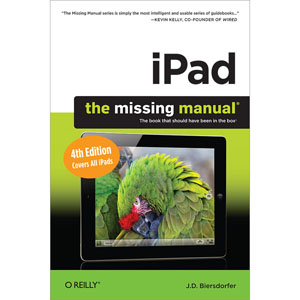| Mobile Design Pattern Gallery, Color Edition Posted: 18 May 2012 09:21 PM PDT 
Book Description When you're under pressure to produce a well designed, easy-to-navigate mobile app, there's no time to reinvent the wheel. This concise book provides a handy reference to 70 mobile app design patterns, illustrated by more than 400 screenshots from current iOS, Android, BlackBerry, WebOS, Windows Mobile, and Symbian apps. User experience professional Theresa Neil (Designing Web Interfaces) walks you through design patterns in 10 separate categories, including anti-patterns. Whether you're designing a simple iPhone application or one that's meant to work for every popular mobile OS on the market, these patterns provide solutions to common design challenges. This print edition is in full color. Pattern categories include: - Navigation: get patterns for primary and secondary navigation
- Forms: break the industry-wide habits of bad form design
- Tables and lists: display only the most important information
- Search, sort, and filter: make these functions easy to use
- Tools: create the illusion of direct interaction
- Charts: learn best practices for basic chart design
- Invitations: invite users to get started and discover features
- Controls and feedback: help users perform actions, and provide them with timely feedback
- Help: integrate help pages into a smaller form factor
“It's a super handy catalog that I can flip to for ideas.”
—Bill Scott, Senior Director of Web Development at PayPal “Just a quick thanks to express my sheer gratitude for this pub, it has been a guide for me reworking a design for an app already in production!”
—Agatha June, UX designer Table of Contents
Chapter 1. Navigation
Chapter 2. Forms
Chapter 3. Tables & Lists
Chapter 4. Search, Sort & Filter
Chapter 5. Tools
Chapter 6. Charts
Chapter 7. Invitations
Chapter 8. Feedback & Affordance
Chapter 9. Help
Chapter 10. Anti-Patterns Book Details - Paperback: 280 pages
- Publisher: O’Reilly Media; Color Edition (May 2012)
- Language: English
- ISBN-10: 1449336442
- ISBN-13: 978-1449336448
Note: There is a file embedded within this post, please visit this post to download the file. Related Posts 

|
| Mobile Development with C# Posted: 18 May 2012 09:17 PM PDT 
Book Description It's true: you can build native apps for iOS, Android, and Windows Phone with C# and the .NET Framework—with help from MonoTouch and Mono for Android. This hands-on guide shows you how to reuse one codebase across all three platforms by combining the business logic layer of your C# app with separate, fully native UIs. It's an ideal marriage of platform-specific development and the “write once, run everywhere” philosophy. By building a series of simple applications, you'll experience the advantages of using .NET in mobile development and learn how to write complete apps that access the unique features of today's three most important mobile platforms. - Learn the building blocks for building applications on iOS, Android, and Windows Phone
- Discover how the Mono tools interact with iOS and Android
- Use several techniques and patterns for maximizing non-UI code reuse
- Determine how much functionality can go into the shared business logic layer
- Connect to external resources with .NET's rich networking stack
- Read and write data using each platform's filesystem and local database
- Create apps to explore the platforms' location and mapping capabilities
Table of Contents
Chapter 1. Surveying the Landscape
Chapter 2. Hello, Platforms!
Chapter 3. Code Sharing Techniques
Chapter 4. Accessing the Network
Chapter 5. Storing Data
Chapter 6. Location, Location, Location Book Details - Paperback: 174 pages
- Publisher: O’Reilly Media (May 2012)
- Language: English
- ISBN-10: 1449320236
- ISBN-13: 978-1449320232
Note: There is a file embedded within this post, please visit this post to download the file. Related Posts 

|
| Developing Web Applications with Haskell and Yesod Posted: 18 May 2012 09:15 PM PDT 
Book Description This fast-moving guide introduces web application development with Haskell and Yesod, a potent language/framework combination that supports high-performing applications that are modular, type-safe, and concise. You'll work with several samples to explore the way Yesod handles widgets, forms, persistence, and RESTful content. You also get an introduction to various Haskell tools to supplement your basic knowledge of the language. By the time you finish this book, you'll create a production-quality web application with Yesod's ready-to-use scaffolding. You'll also examine several real-world examples, including a blog, a wiki, a JSON web service, and a Sphinx search server. - Build a simple application to learn Yesod's foundation datatype and Web Application Interface (WAI)
- Use Shakespearean template languages for HTML, CSS, and Javascript output
- Produce cleaner, more modular code by learning how Yesod monads interact
- Implement the yesod-form declarative API to build forms on top of widgets
- Learn how Yesod and Haskell store session data and handle persistence
- Use techniques to serve an HTML page and a machine-friendly JSON page from the same URL
- Create reusable components for several applications with Yesod subsites
Table of Contents
Part I: Basics
Chapter 1. Introduction
Chapter 2. Haskell
Chapter 3. Basics
Chapter 4. Shakespearean Templates
Chapter 5. Widgets
Chapter 6. Yesod Typeclass
Chapter 7. Routing and Handlers
Chapter 8. Forms
Chapter 9. Sessions
Chapter 10. Persistent
Chapter 11. Deploying Your Webapp Part II: Advanced
Chapter 12. RESTful Content
Chapter 13. Yesod's Monads
Chapter 14. Authentication and Authorization
Chapter 15. Scaffolding and the Site Template
Chapter 16. Internationalization
Chapter 17. Creating a Subsite Part III: Examples
Chapter 18. Blog: i18n, Authentication, Authorization, and Database
Chapter 19. Wiki: Markdown, Chat Subsite, Event Source
Chapter 20. JSON Web Service
Chapter 21. Case Study: Sphinx-Based Search Book Details - Paperback: 298 pages
- Publisher: O’Reilly Media (April 2012)
- Language: English
- ISBN-10: 1449316972
- ISBN-13: 978-1449316976
Note: There is a file embedded within this post, please visit this post to download the file. Related Posts 

|
| Database Design and Relational Theory Posted: 18 May 2012 09:10 PM PDT 
Book Description What makes this book different from others on database design? Many resources on design practice do little to explain the underlying theory, and books on design theory are aimed primarily at theoreticians. In this book, renowned expert Chris Date bridges the gap by introducing design theory in ways practitioners can understand—drawing on lessons learned over four decades of experience to demonstrate why proper database design is so critical in the first place. Every chapter includes a set of exercises that show how to apply the theoretical ideas in practice, provide additional information, or ask you to prove some simple theoretical result. If you're a database professional familiar with the relational model, and have more than a passing interest in database design, this book is for you. Questions this book answers include: - Why is Heath's Theorem so important?
- What is The Principle of Orthogonal Design?
- What makes some JDs reducible and others irreducible?
- Why does dependency preservation matter?
- Should data redundancy always be avoided? Can it be?
Databases often stay in production for decades, and careful design is critical for avoiding subtle errors and processing problems over time. If they're badly designed, the negative impacts can be incredibly widespread. This gentle introduction shows you how to use important theoretical results to create good database designs. Table of Contents
Part I: SETTING THE SCENE
Chapter 1. Preliminaries
Chapter 2. Prerequisites Part II: FUNCTIONAL DEPENDENCIES, BOYCE/CODD NORMAL FORM, AND RELATED MATTERS
Chapter 3. Normalization: Some Generalities
Chapter 4. FDs and BCNF (Informal)
Chapter 5. FDs and BCNF (Formal)
Chapter 6. Preserving FDs
Chapter 7. FD Axiomatization
Chapter 8. Denormalization Part III: JOIN DEPENDENCIES, FIFTH NORMAL FORM, AND RELATED MATTERS
Chapter 9. JDs and 5NF (Informal)
Chapter 10. JDs and 5NF (Formal)
Chapter 11. Implicit Dependencies
Chapter 12. MVDs and 4NF
Chapter 13. Additional Normal Forms Part IV: ORTHOGONALITY
Chapter 14. The Principle of Orthogonal Design Part V: REDUNDANCY
Chapter 15. We Need More Science Book Details - Paperback: 278 pages
- Publisher: O’Reilly Media (April 2012)
- Language: English
- ISBN-10: 1449328016
- ISBN-13: 978-1449328016
Note: There is a file embedded within this post, please visit this post to download the file. Related Posts 

|
| Photoshop CS6: The Missing Manual Posted: 18 May 2012 09:05 PM PDT 
Book Description Photoshop CS6 is truly amazing, but it can also be overwhelming if you're just getting started. This book makes learning Photoshop a breeze by explaining things in a friendly, conversational style—without technical jargon. After a thorough introduction to the program, you'll delve deep into Photoshop's secrets with expert tips and practical advice you can use every day. The important stuff you need to know: - Learn your way around. Get a guided tour of Photoshop's beautiful new workspace.
- Unlock the magic. Discover the most practical ways to use layers, channels, masks, paths, and other tools.
- Fine-tune your images. Learn techniques for cropping, retouching, and combining photos.
- Play with color. Drain, change, and add color; and create gorgeous black-and-whites and duotones.
- Be artistic. Create original illustrations and paintings, use text and filters effectively, and edit video clips.
- Share your work. Produce great-looking images for print and the Web.
- Work smarter and faster. Automate common chores and install plug-ins for complex tasks.
Table of Contents
Part I: The Basics
Chapter 1. Photoshop CS6 Guided Tour
Chapter 2. Opening, Viewing, and Saving Files
Chapter 3. Layers: The Key to Nondestructive Editing
Chapter 4. Selections: Choosing What to Edit Part II: Editing Images
Chapter 5. Controlling Color with Channels
Chapter 6. Cropping, Resizing, and Rotating
Chapter 7. Combining Images
Chapter 8. Draining, Changing, and Adding Color
Chapter 9. Correcting Color and Lighting
Chapter 10. Changing Reality: Removing and Repositioning
Chapter 11. The Art of Sharpening Part III: The Artistic Side of Photoshop
Chapter 12. Painting in Photoshop
Chapter 13. Drawing with the Vector Tools
Chapter 14. Creating Artistic Text
Chapter 15. The Wide World of Filters Part IV: Printing and the Web
Chapter 16. Photoshop and Print
Chapter 17. Photoshop and the Web Part V: Photoshop Power
Chapter 18. Working Smarter with Actions
Chapter 19. Beyond Photoshop: Plug-Ins
Chapter 20. Photoshop and Video
Chapter 21. Using Adobe Bridge Book Details - Paperback: 888 pages
- Publisher: Pogue Press (May 2012)
- Language: English
- ISBN-10: 1449316158
- ISBN-13: 978-1449316150
Note: There is a file embedded within this post, please visit this post to download the file. Related Posts 

|
| iPad: The Missing Manual, 4th Edition Posted: 18 May 2012 09:00 PM PDT 
Book Description Apple's third-generation iPad has a new, razor-sharp Retina display and a robust processor that will dazzle you with their looks and speed, but you won't get far without an owner's manual to all the tablet's features. This comprehensive guide shows you how to transfer media to your iPad, sync and shop wirelessly, tap into WiFi and 4G cellular networks, and use iTunes for media management. The important stuff you need to know: - Build your media library. Fill your iPad with music, photos, movies, TV shows, games, eBooks, and more.
- Sync wirelessly. Keep your iPad's apps, media, and email messages current without cabling up.
- Capture stunning images. Take photos and HD video with the tablet's new 5 megapixel iSight camera.
- Get online. Connect via WiFi or the blazing-fast 4G LTE cellular network—and create a free Wi-Fi hotspot with Verizon's iPad.
- Take dictation. "Speak" email messages and notes, and have the iPad type them up.
Table of Contents
Chapter 1. Set Up Your iPad
Chapter 2. Tour Your iPad
Chapter 3. Interact with Your iPad
Chapter 4. Get Online
Chapter 5. Surf the Web
Chapter 6. Keep in Touch with Email and Messaging
Chapter 7. Organize Your Life with the iPad's Apps
Chapter 8. Shop the App Store
Chapter 9. Read iBooks and ePeriodicals
Chapter 10. Play Games
Chapter 11. Get Productive with iWork
Chapter 12. Sync and Share Media Files Using iTunes and iCloud
Chapter 13. Master iTunes On the Desktop
Chapter 14. Manage and Play Music and Other Audio
Chapter 15. Watch, Make, and Edit Videos
Chapter 16. View, Shoot, Edit, and Manage Photos
Chapter 17. Back Up and Sync Your Gadgets with iCloud Book Details - Paperback: 368 pages
- Publisher: O’Reilly Media; 4th Edition (April 2012)
- Language: English
- ISBN-10: 1449316182
- ISBN-13: 978-1449316181
Note: There is a file embedded within this post, please visit this post to download the file. Related Posts 

|








Tidak ada komentar:
Posting Komentar